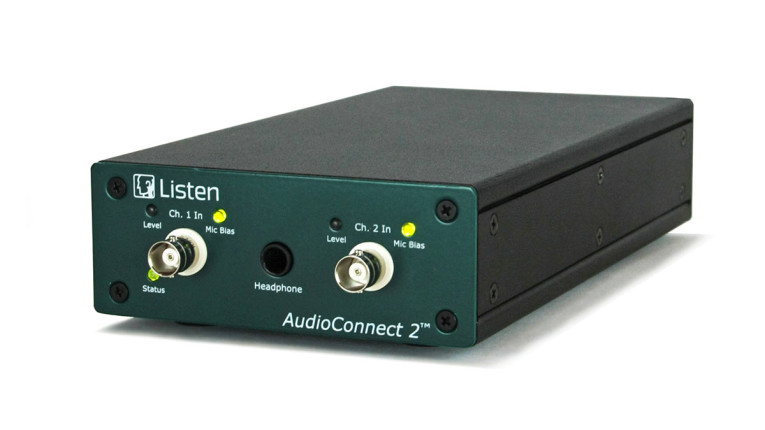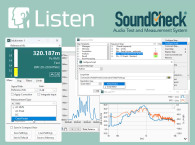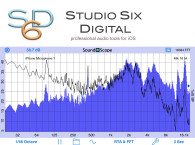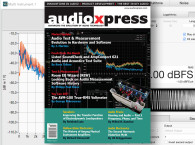The new Listen SoundCheck 21 software introduces a new enhanced Loose Particle detection algorithm that offers more accurate measurements of transient distortion and improved correlation to subjective listening. It also makes it easier to distinguish defects from background noise. The new algorithm uses the same time-envelope analysis technique as in Listen’s original 2005 Loose Particle algorithm, the first method developed for detecting random transient production line defects. However, this new version adds a prominence metric to better distinguish the loose particle defects from other artifacts, and removes the stimulus from the response so only the defects are heard. This makes it easy to set limits in line with subjective tests.

In addition to identifying distortion caused by foreign material in the voice coil gap of a speaker, it is also valuable for detecting rattling components such as buttons on smart devices and bluetooth speakers, and identifying buzz, squeak and rattle such as loose wires or fasteners in automotive audio applications.
SoundCheck’s focus on multichannel analysis continues with a new multi-channel high resolution FFT analyzer to replace the original single channel spectrum analyzer. This enables any number of live FFT spectra to be simultaneously viewed in real time on the same graph, allowing direct comparisons and saving screen real estate over the previous methods of using a separate analyzer for each channel. Channel subtraction, maximum, minimum and power average can be calculated and displayed in real time, and the analyzer offers many options including standard and custom windows and various weighting options.

Live FFT curves can easily be dragged and dropped into any graph for easy comparison to limits and reference curves. FFT analyses can be viewed simultaneously with RTA analyses, either side by side or superimposed on one another. This enables both high resolution spectra and constant percentage bandwidth resolution (eg. 1/12th Octave) measurements to be viewed at the same time.
Also included in the update, a new Metadata feature simplifies data collection and documentation. Curves, values, results and waveforms can now be saved to a single TDMS file, along with all test parameters acquired during the sequence run such as test conditions, test sequence used, operator, serial number, microphone position, data entered via a message step and more.
Both system fields (e.g. sequence name, operator, SoundCheck serial number) and user-defined fields can be stored. This data can be viewed or recalled in SoundCheck, as well as by applications such as Microsoft Excel and Matlab. The TDMS format used for Metadata saves it in a binary format, minimizing read and write times when a sequence is running. This feature has many uses in both R&D and production applications.
SoundCheck 21 also includes new features designed to ensure test integrity and protect intellectual property when sharing test sequences with 3rd party manufacturers. Any test sequence can be locked and password-protected. Once locked, it can be run but sequence steps and limits cannot be edited without the password. Furthermore, the sequence steps cannot even be viewed, guarding the intellectual property in the sequences. Sequences can also be configured to only run on a particular SoundCheck system, or block of systems. This further protects against unauthorized use and helps ensure the end-to-end integrity of custom tests, guaranteeing that products are tested exactly as intended by the manufacturer.

Finally, SoundCheck 21 supports AudioConnect 2, Listen’s new compact and high resolution (up to 192kHz sampling rate) two-channel audio interface. With the option to power it via a laptop USB-C port, this new compact, portable, and easy to use audio interface is designed for measurements anywhere from the production line to out in the field, and is particularly suitable for headphone testing. Set-up and configuration is extremely simple and fast with full plug-and-play functionality and TEDS support for automatic identification, configuration and calibration of microphones and accelerometers.
The new AudioConnect 2 interface is exclusively configured via the SoundCheck software - there are no front panel controls. This provides an added level of test integrity by ensuring that settings cannot be inadvertently adjusted outside of intended test configuration.
www.listeninc.com






